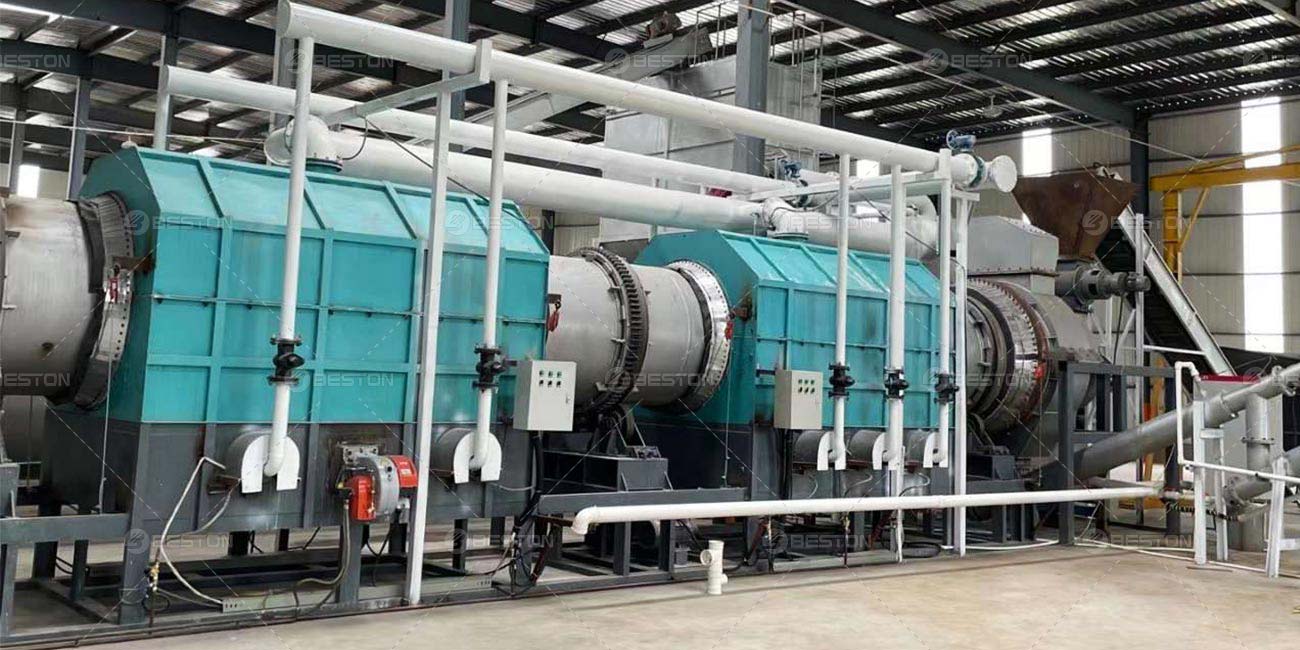In the ever-evolving landscape of sustainable technologies, the enigmatic world of biochar production equipment stands as a pivotal force. These sophisticated machines are the unsung heroes, driving the transformation of organic matter into a potent, carbon-rich substance known as biochar. Beneath their unassuming exterior lies a world of intricate processes and possibilities.
Decoding Biochar: The Carbon Alchemy
To truly appreciate the role of biochar production equipment, we must first decipher the essence of biochar itself. Biochar is a highly porous carbon material formed through the pyrolysis of biomass. Unlike ordinary charcoal, biochar boasts a unique ability to enhance soil fertility and sequester carbon, making it an invaluable resource in sustainable agriculture and environmental restoration efforts.

High Quality Biochar Production Equipment
Biochar Production Equipment: A Closer Gaze
Pyrolysis Process
At the core of these machines lies the art of pyrolysis, a thermochemical process where biomass undergoes decomposition at elevated temperatures in a low-oxygen environment. This intricate dance of heat and chemistry transforms organic matter into a trifecta of valuable outputs: biochar, syngas, and bio-oil.
Crucial Components
Feedstock Feeder: The journey commences here as biomass materials, such as wood chips, agricultural residues, or even organic waste, are meticulously loaded into the machine.
Pyrolysis Reactor: The heart of the operation, where the pyrolysis magic unfolds. It’s here that the biomass is subjected to extreme heat, leading to the release of gases and leaving behind the prized biochar.
Gas Collection System: The valuable gases produced during pyrolysis, like methane and hydrogen, are efficiently captured for further utilization.
Condensation Unit: This component works its cooling magic on the gases, converting them into a valuable liquid form – bio-oil. This precious substance holds great potential for various applications.
Biochar Collection Point: The culmination of the process, where the precious biochar is collected, ready to embark on its journey of enriching the soil and sequestering carbon. More information on biochar machine for sale here.
The Multifaceted Applications of Biochar
The versatility of biochar is nothing short of astounding, making it a transformative resource in several domains:
1. Agriculture
Biochar, when introduced to soil, acts as a soil conditioner par excellence. It enhances water retention, nutrient availability, and microbial activity. The result? Increased crop yields, reduced dependence on synthetic fertilizers, and fortified soil resilience.
2. Environmental Remediation
In environmental restoration projects, biochar emerges as an environmental superhero. Its exceptional adsorption capacity can efficiently remove contaminants from both soil and water, offering a sustainable solution for land and water cleanup.
3. Carbon Sequestration
In the battle against climate change, biochar serves as a potent ally. When incorporated into soil, it securely locks away carbon for centuries, mitigating atmospheric carbon dioxide levels. Check the biochar pyrolysis equipment here.
4. Livestock Farming
Biochar also extends its benefits to the realm of livestock farming. Used as a feed supplement, it enhances digestive health in animals and curbs methane emissions, promoting sustainable livestock practices.
5. Energy Generation
The gases produced during pyrolysis are not to be underestimated. They can be harnessed for energy production, offering a sustainable and renewable source of power.

Batch Biochar Production Equipment
Navigating the Cost Terrain of Biochar Production Equipment
Understanding the economics of biochar production equipment is pivotal for those venturing into this green realm. Several factors contribute to the overall cost:
1. Machine Size and Capacity
The size of the equipment significantly impacts the cost. Larger machines, while requiring a higher initial investment, have the advantage of processing more biomass, leading to cost-effective biochar production over time.
2. Feedstock Availability
The type and accessibility of feedstock play a crucial role. Locally sourced biomass often proves to be more cost-effective and eco-friendly.
3. Operational Expenses
Ongoing costs, including maintenance, energy consumption, and labor, are essential considerations in the economic landscape of biochar production.
The Green Advantages of Biochar Production Equipment
The appeal of biochar production equipment extends far beyond economic viability. These machines offer an array of environmental benefits:
Waste Diversion: They play a pivotal role in reducing the volume of organic waste that would otherwise end up in landfills.
Soil Regeneration: Through enriching soil and enhancing its quality, biochar contributes to sustainable agriculture and ecosystem restoration.
Carbon Mitigation: By sequestering carbon, biochar aids in the reduction of atmospheric carbon dioxide levels.
Contaminant Cleanup: Biochar efficiently detoxifies soil and water, making it a sustainable solution for environmental remediation projects. More information on Beston Group.
Paving the Way for a Greener Future
In an era marked by environmental consciousness and a growing need for sustainable practices, biochar production equipment holds the promise of turning organic waste into a resource of boundless potential. These machines, with their capacity to produce biochar and contribute to diverse sectors, are the unsung heroes in the quest for a greener, more sustainable future.